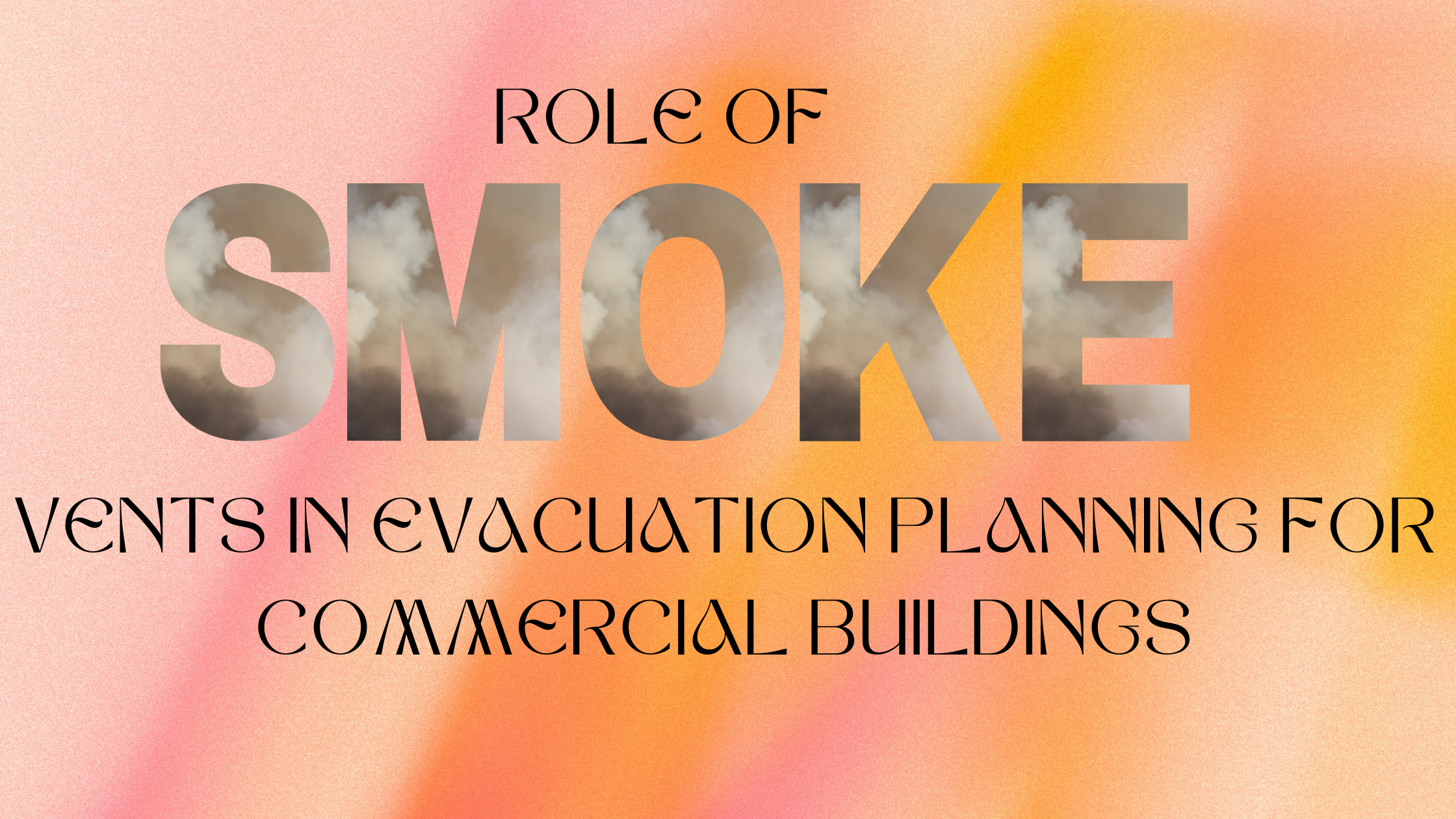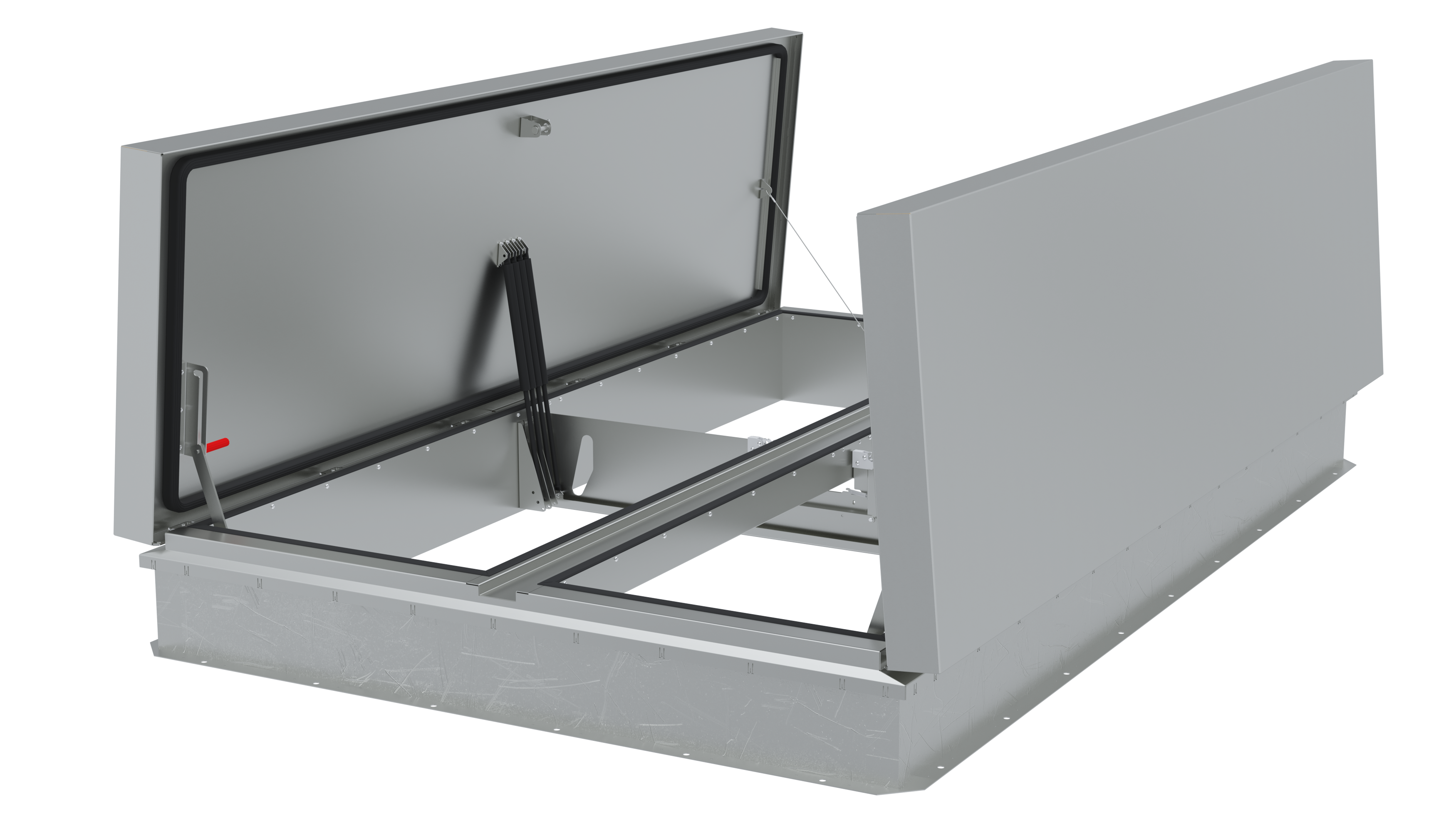Role of Smoke Vents in Evacuation Planning for Commercial Buildings

Emergency Preparedness
In the event of a fire emergency, the safety and well-being of building occupants rely heavily on effective evacuation planning and systems. Smoke vents are integral components of emergency preparedness in commercial buildings, facilitating the safe evacuation of occupants and aiding firefighting efforts. In this blog, we'll explore the crucial role of smoke vents in evacuation planning and their contribution to enhancing overall safety in commercial properties.
Early Detection and Smoke Management
Smoke vents play a vital role in management of smoke in the event of a fire. By venting smoke and heat out of the building, they help prevent the rapid spread of smoke to other areas, thereby improving visibility and reducing the risk of smoke inhalation for occupants. This early detection and smoke management are critical for enabling timely evacuation and minimizing potential injuries or fatalities.
Creating Safe Escape Routes
During a fire emergency, clear and accessible escape routes are essential for safe evacuation. Smoke vents help create these pathways by venting smoke and heat from stairwells, corridors, and other exit routes. By maintaining clear egress routes, smoke vents enable occupants to evacuate quickly and efficiently. This enhances the likelihood of successful evacuation and reduces the risk of congestion or panic among occupants.
Assisting Firefighting Operations
Smoke vents not only aid in occupant evacuation but also assist firefighting operations by providing firefighters with access points to ventilate smoke and heat from the building. By venting smoke vertically through the roof, smoke vents help reduce the build-up of toxic gases and improve conditions for firefighting personnel inside the building. This enhances firefighter safety and effectiveness, allowing them to more efficiently locate and extinguish the fire.
Compliance with Building Codes and Standards
Building codes and standards often mandate the installation of smoke vents in commercial buildings to ensure compliance with fire safety regulations. Regulatory requirements may specify the size, location, and operation of smoke vents based on factors such as building occupancy, size, and configuration. Compliance with these regulations is essential for safeguarding occupant safety, mitigating liability risks for building owners, and avoiding penalties for non-compliance.
International Building Code 2024 - 910 Smoke & Heat Removal
Integration with Fire Alarm Systems
Effective integration of smoke vents with fire alarm systems and other life safety systems is essential for ensuring  timely and coordinated responses to fire emergencies. Smoke vents can be designed to activate automatically in response to smoke detection signals or manual activation by building occupants or firefighting personnel. This seamless integration enhances the overall effectiveness of the fire safety system and ensures a swift and coordinated response to emergencies.
timely and coordinated responses to fire emergencies. Smoke vents can be designed to activate automatically in response to smoke detection signals or manual activation by building occupants or firefighting personnel. This seamless integration enhances the overall effectiveness of the fire safety system and ensures a swift and coordinated response to emergencies.
In emergency preparedness planning for commercial buildings, smoke vents play a critical role in facilitating safe evacuation, aiding firefighting operations, and ensuring compliance with fire safety regulations. By venting smoke and heat out of the building, creating clear escape routes, and assisting firefighting efforts, smoke vents contribute to the overall safety and well-being of building occupants during fire emergencies. Incorporating smoke vents into comprehensive emergency preparedness plans is essential for enhancing the resilience and effectiveness of commercial building safety systems.
Nystrom offers a complete line of smoke vents designed to meet all fire and life safety building codes. For additional information on products or specification, please contact Customer Sales & Support for guidance in selecting smoke vents on your next project.




